As a dog trainer, I see it all the time:
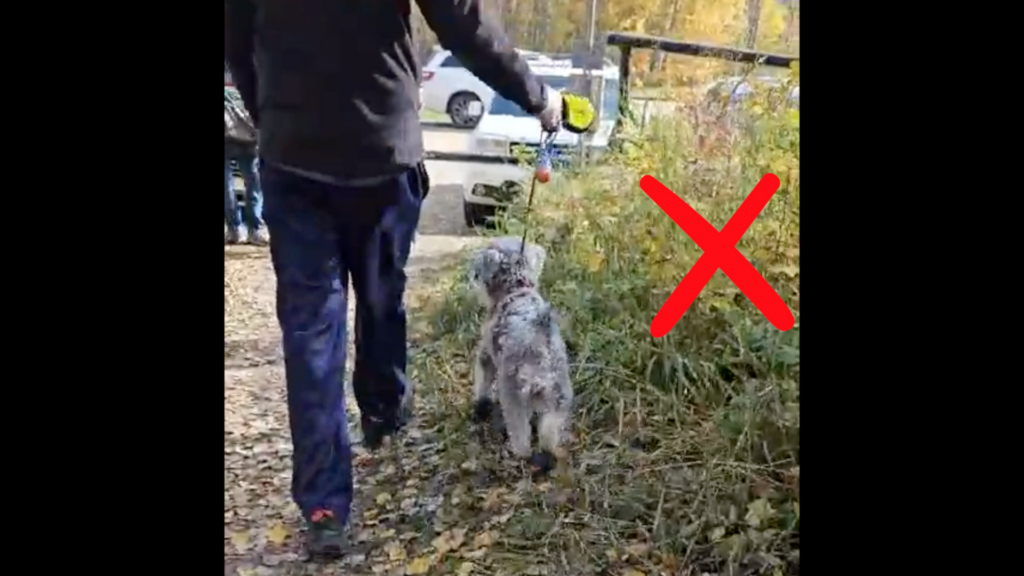
Someone is walking their reactive dog towards a trigger, and without even noticing themselves doing it, they start adjusting their hands and tightening the leash.
Honestly, it makes sense.
If your dog has barked, lunged, or snarled at other dogs in the past it’s normal for you to naturally brace yourself when expecting that to occur again. Subconsciously it may even feel like pre-tensing the leash will make it harder for your dog to react since they have less room to move.
The problem with leash tension though is that it actually makes reactivity more likely and worsens it.
Think the fight or flight response:
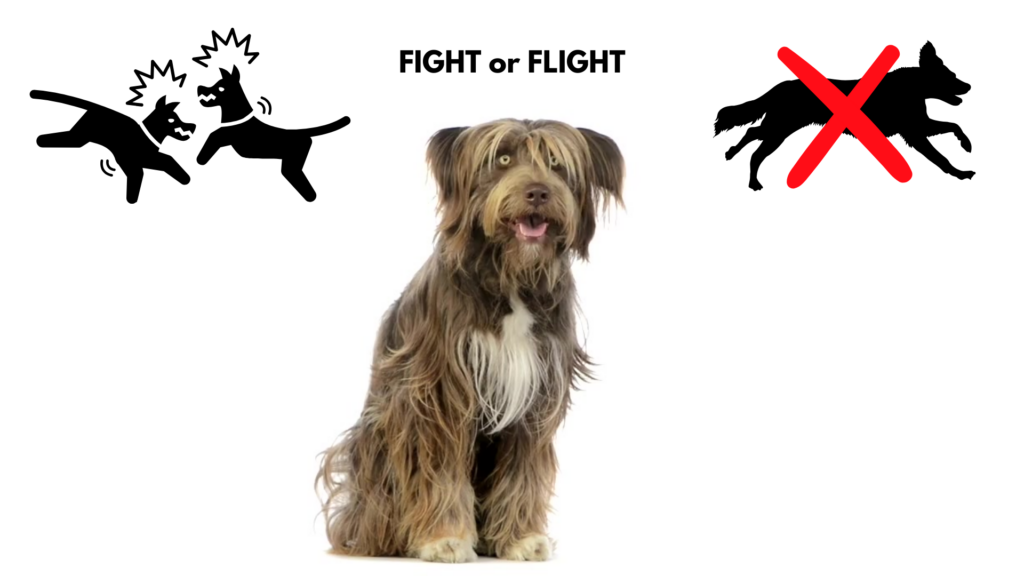
If leash tension makes your reactive dog feel like they can’t take the space that they need, they’re more likely to have those huge reactions at the top of the canine ladder of aggression.
So, what can you do about this?
(Prefer video demonstrations? Watch the Youtube version of this blog post here)
I want to give you three tips to help you avoid leash tension during reactivity training!
Leash tension tip 1: Make sure that you fully understand dog threshold
I like to think of a dog’s threshold like a doorway threshold: when you you cross it, you go from one zone to another.
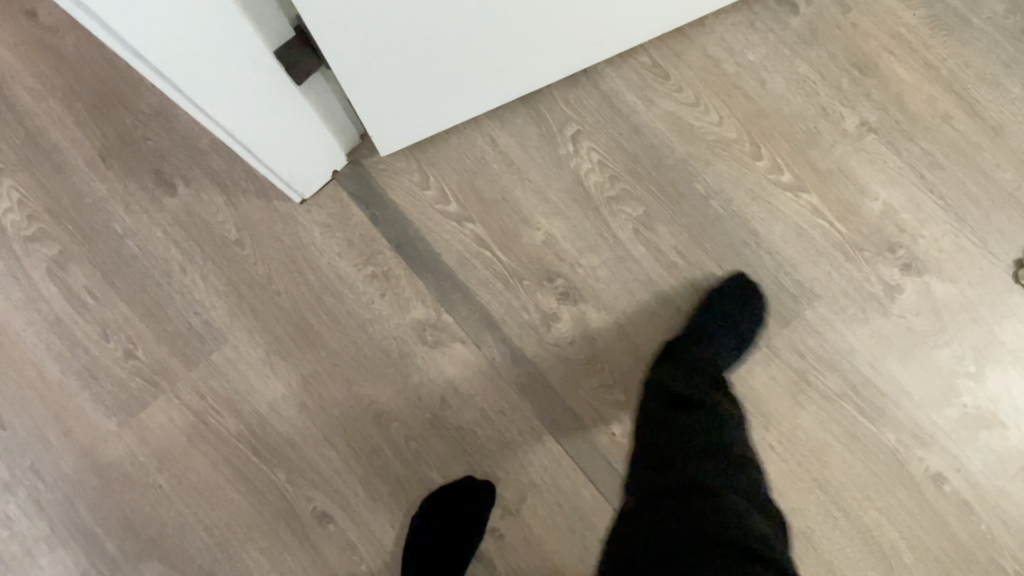
With dogs, when the threshold is crossed they go from one emotional zone to another. They start reacting rather than thinking.
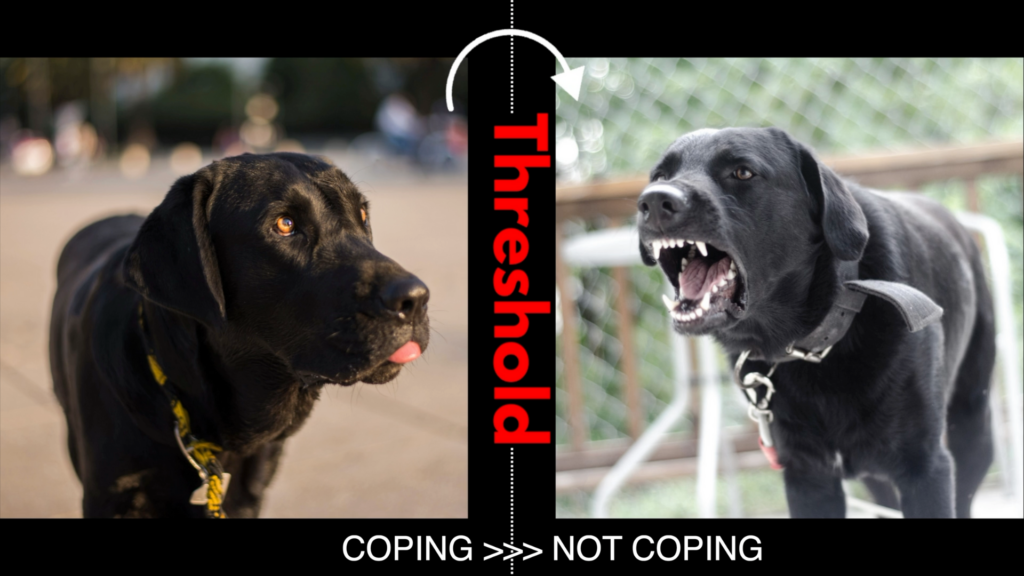
For training to be effective, we need to make sure that the dog is kept under threshold during it.
Behaviours at the upper end of the canine ladder of aggression are certainly a sign that the dog is over threshold. However, a more subtle sign that I commonly tell people to look out for is if a typically food motivated dog loses interest in training treats during training.
(To learn more about dog threshold, I encourage you to read THIS blog post)
Leash tension tip 2: Make sure that the distance from your dog’s trigger is sufficient
Choosing the proper training distance is crucial to effective dog training.
In this threshold video I explain which factors you should consider about your dogs trigger when deciding how much space your dog is going to require for success.
After considering those factors about my dogs trigger, there are 3 things I watch for during training to let me know if the distance I’ve chosen is adequate:
- The first and most obvious is if the dog is barking and lunging, I know that they need more space.
- Secondly, I watch for more subtle body language. If the dog is putting tension on the leash, if they’re strongly forward leaning, if they have a fixed gaze, or if they have a pointed leg I encourage taking a training break or add extra distance.
- And third, if a previously loaded marker word fails to get the dog’s attention twice (and I need to make a secondary sound to grab their attention) then I add extra space.
In general, if you determine that your dog needs more space it’s best to verbally encourage them to follow you. However, if that fails and your dog is too over threshold to listen, watch this:
Please keep in mind that when you first start training, your dog may need a lot of space. This might mean that you have to start training in fields or other areas with extra space in order to have a successful session.
I also strongly encourage you to train an emergency U-turn so that you can turn and avoid situations that your dog isn’t ready for on walks without adding any leash tension. This is particularly helpful if you live in a busy city and know you’ll be encountering scenarios outside of your dogs current abilities!
I will link this tutorial for how I train an emergency U-turn:
Leash tension tip 3: If YOU can’t help but tense the leash, try holding it differently
I mentioned the importance of YOU not tensing the leash when your reactive dog goes past a trigger.
However, I do recognize that in stressful situations it’s really hard to break old habits.
If that’s the case, I suggest changing how you hold the leash for a few days so that you can reprogram yourself.
When we hold the leash like this:
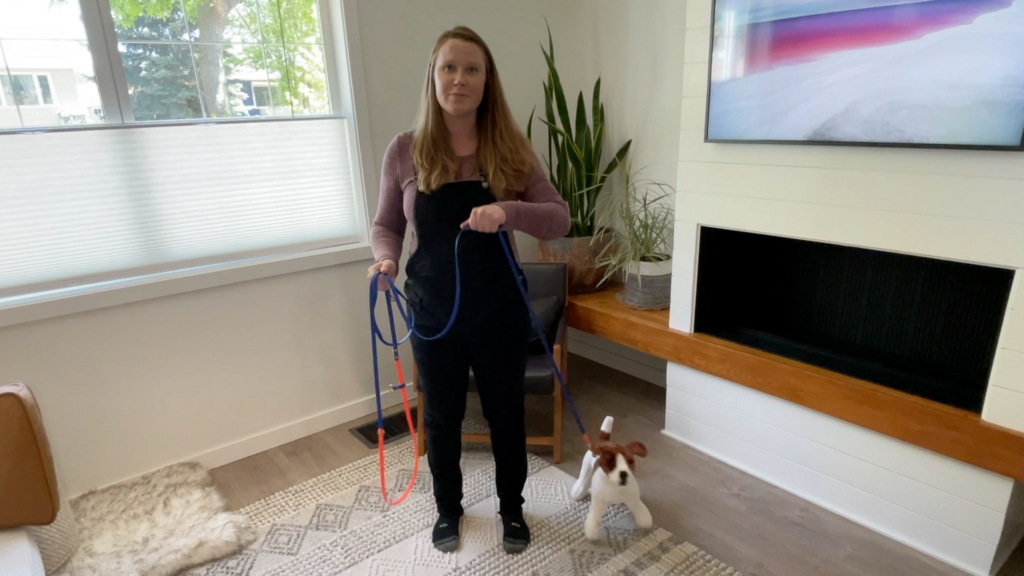
it’s naturally really easy to lift our arm and tense the leash, even subconsciously.
Instead try holding the leash behind your back for a little while.
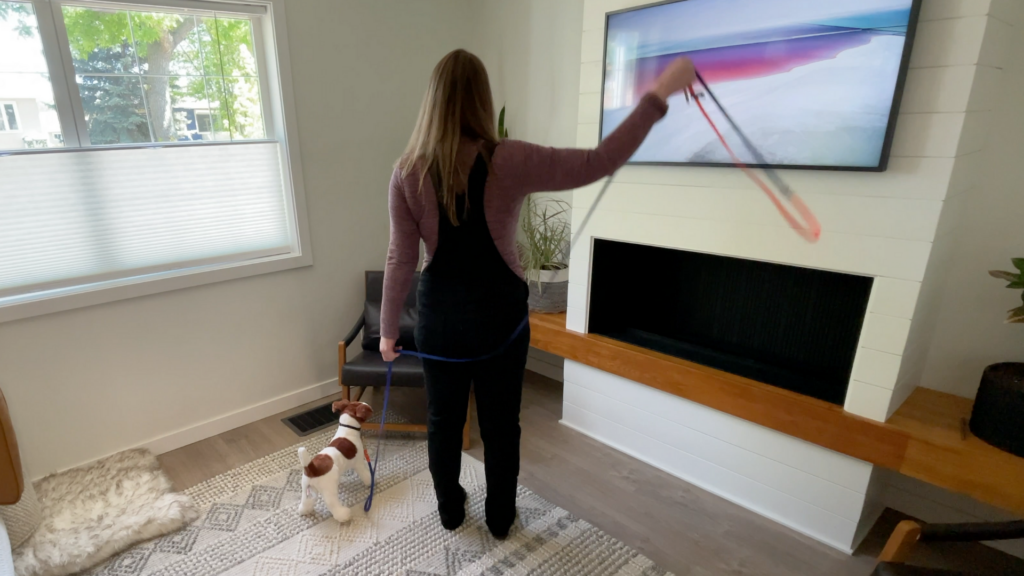
This makes lifting your arm more unnatural, so it’s more difficult to do it unconsciously.
Summary:
It’s important to remember that lack of leash tension won’t in itself solve reactivity, but leash tension will worsen reactivity.
If you can train yourself to not add or rely on leash tension, then the rest of your reactivity training will be more successful!
If you want more help with your dog’s leash reactivity, then I’ll link my entire reactivity training playlist here:
Happy training!
Disclosure: Happy Hounds uses affiliate links. Purchasing with these links will not cost you any extra, but I get commissions for purchases made through these links. Affiliate links help me to continue to offer free resources & blog posts. I would love if you used them!
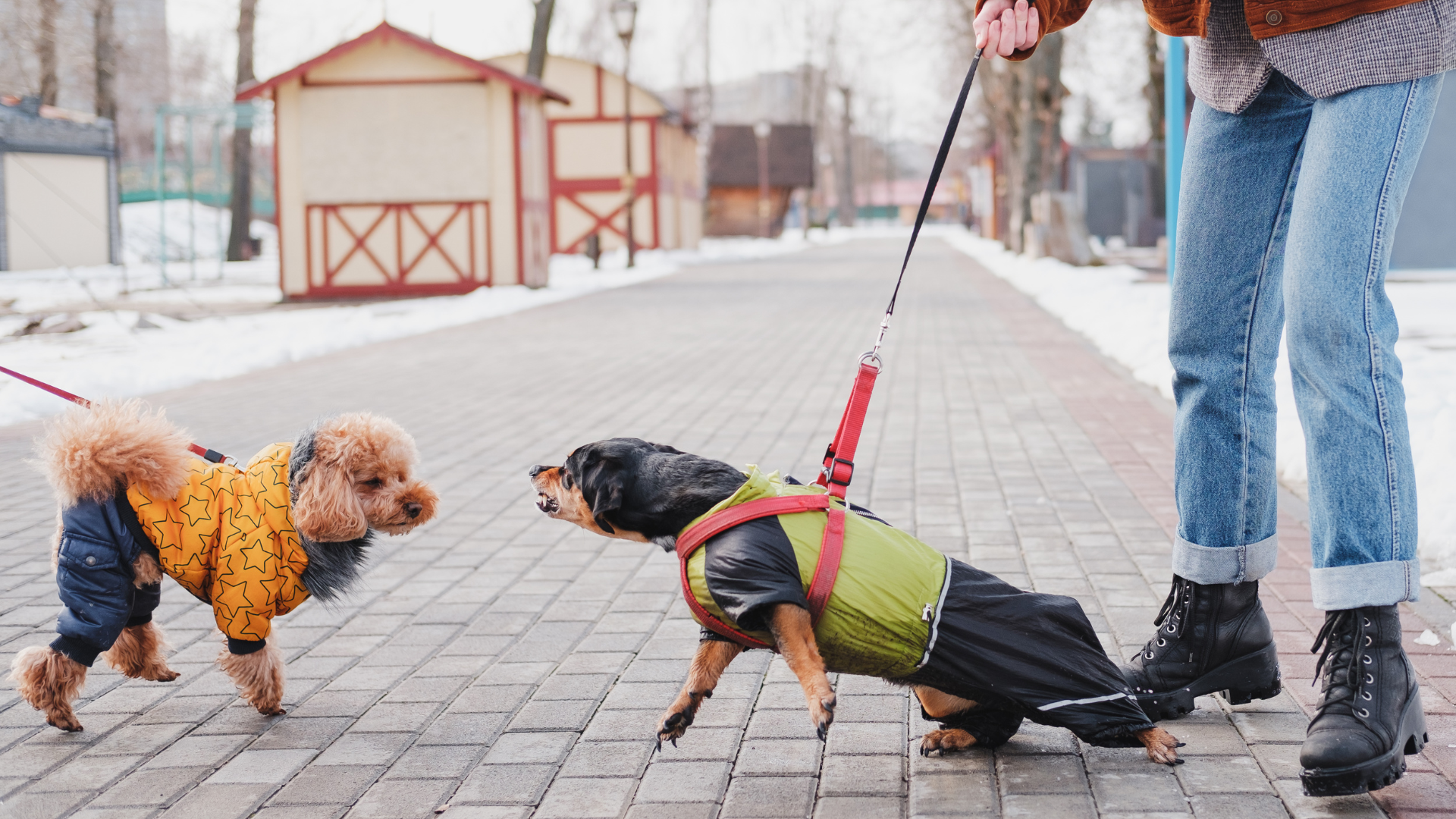
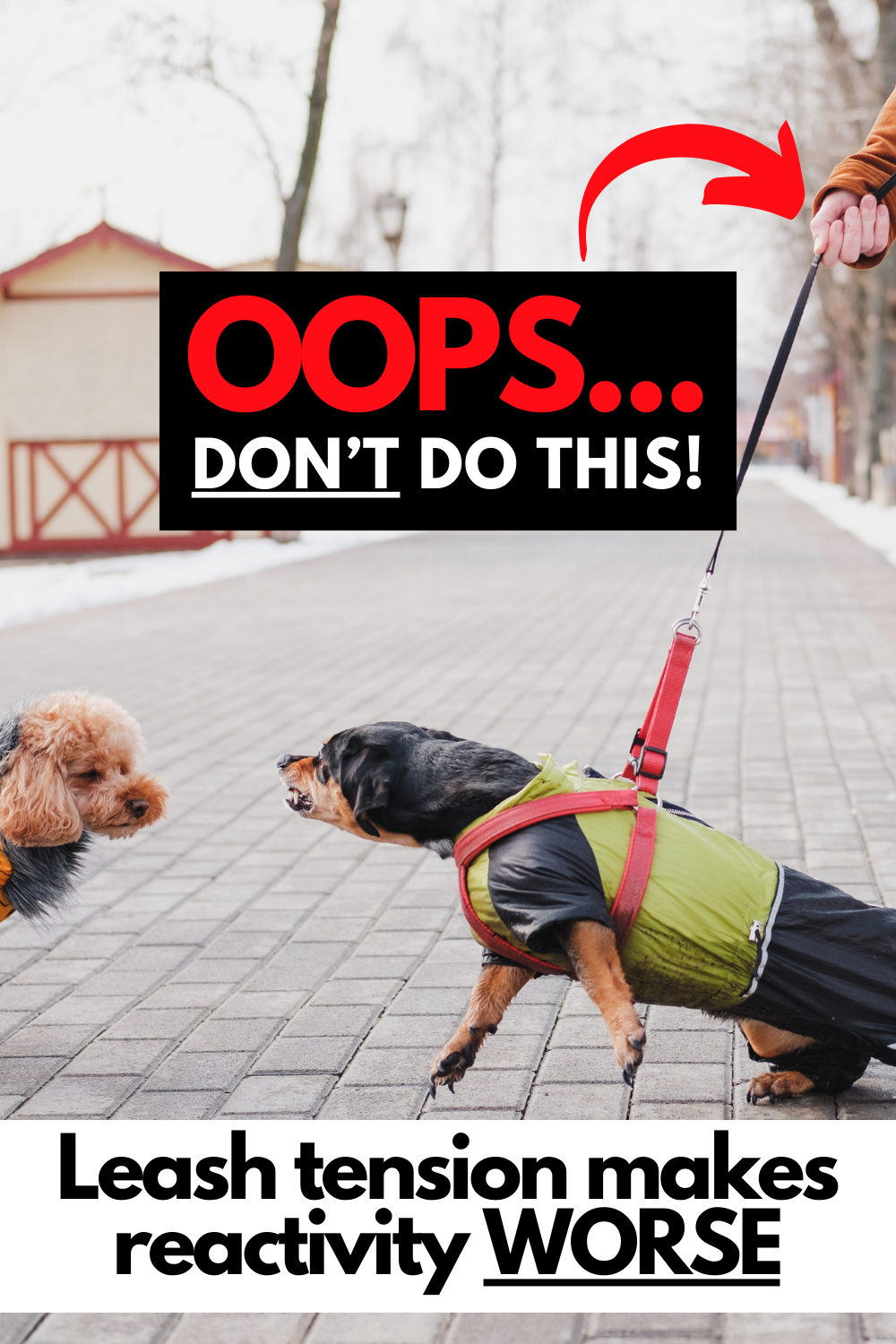
+ show Comments
- Hide Comments
add a comment